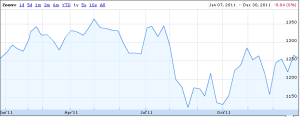Last summer I visited an exhibition on occasion of the celebration of “2011 Year of Antoine de Saint-Exupéry”. Elsewhere he is mainly known as the author of “The Little Prince” (Le Petit Prince), however I learnt in that exhibition that in Toulouse he is mainly known as an aviation pioneer, flying airmail routes (for the emblematic Aéropostale based in Toulouse) and then for the French Air Force.
I guess that some of you had read Le Petit Prince early in your lives, I didn’t. I received the book as a present from former colleagues when moving to France and only finished it some weeks ago, being the first book I’ve read in French. Not bad for a start, as according to the Wikipedia it is the most read book in French language and was voted as the best book of the 20th century in France.
It has some idealistic messages or fine criticisms, to name a few:
- “One sees clearly only with the heart. What is essential is invisible to the eye.”
- A businessman who goes on “owning” stars and counting them not having time for anything else, not knowing what to do with them and having a very serious thought of him.
- The geographer, proud of his profession, but who lacks any practical knowledge as “that” is the responsibility of someone else, the explorer in this case.
- The concept of domestication being two-ways. I loved when the prince goes “Il y a une fleur… je crois qu’elle m’a apprivoisé…” (“There is a flower … I think she domesticated me …”) I believe this could be applicable to many pet owners.
I felt especially caught when the book first said “Les grandes personnes aiment les chiffres” (adults love numbers) and later when it went:
“Si les deux milliards d’habitants qui peuplent la terre se tenaient debout et un peu serrés, comme pour un meeting, ils logeraient aisément sur une place publique de vingt milles de long sur vingt milles de large. On pourrait entasser l’humanité sur le moindre petit îlot du Pacifique.
Les grandes personnes, bien sûr, ne vous croiront pas. Elles s’imaginent tenir beaucoup de place. Elles se voient importantes comme des baobabs. Vous leur conseillerez donc de faire le calcul. Elles adorent les chiffres: ça leur plaira.”
(“If the two billion inhabitants who people its surface were all to stand upright and somewhat crowded together, as they do for some big public assembly, they could easily be put into one public square twenty miles long and twenty miles wide. All humanity could be piled up on a small Pacific islet.
The grown-ups, to be sure, will not believe you when you tell them that. They imagine that they fill a great deal of space. They fancy themselves as important as the baobabs. You should advise them, then, to make their own calculations. They adore figures, and that will please them.”)
When I read the first paragraph and before reading the second, I was already writing a remainder note to make the calculation…
In demonstrations, the range of people per square meter is between 2 and 3.5 (4 being “like a rock concert”). A square of 20 miles by 20 miles covers an area of 1,035 millions of square meters. Therefore, in such a square we could pack between 2 and 4 billion people, the population of the Earth at the time, yes.







